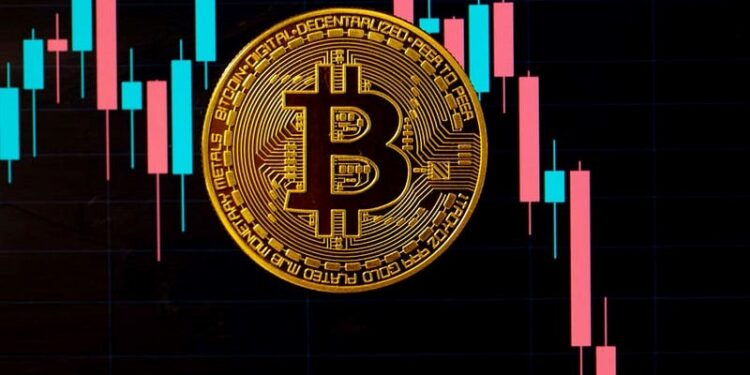Bitcoin’s price has plummeted below $75,000, hitting an intraday low of $74,637 as global markets wrestle with the aftermath of U.S. President Donald Trump’s newly implemented tariff regime.
This sharp drop represents a significant decline of over 10% from $84,000 last week, highlighting intensifying economic anxieties and the cascading effects of a broader financial downturn.
The cryptocurrency’s recent price movement mirrors heightened volatility in conventional markets. This includes a notable slump in the Dow Jones Industrial Average, which shows how intertwined Bitcoin has become with macroeconomic sentiment.
Broader Market Impact and Correlation with Traditional Assets
The broader market collapse stemmed from the sweeping announcement of blanket tariffs on all U.S. imports, stoking fears of a full-fledged global trade war.
- Investors have been increasingly retreating from riskier assets, including cryptocurrencies, driving Bitcoin’s sharp decline.
- Despite holding steady between $83,000 and $84,000 last week amidst drops in equities and gold, Bitcoin has now lost a staggering 28% from its all-time high of $109,000, achieved in January.
- Ethereum (ETH), the second-largest cryptocurrency, has been hit even harder, plunging 14.66% to $1,544.63 as extensive liquidations ripple through digital asset markets.
Massive Liquidations Shake the Crypto Market
- According to CoinGlass data, Bitcoin and Ethereum collectively accounted for $464 million in long liquidations in the past 24 hours, with total liquidations across all cryptocurrencies exceeding $853 million.
- This widespread de-leveraging has impacted over 280,000 traders globally, sparking double-digit losses for major digital assets such as Solana, Dogecoin, and XRP.
- Even the Coinbase 50 index, which tracks the platform’s top 50 most traded cryptocurrencies, has seen an 11.08% decline.
Potential Further Downside for Bitcoin and Global Markets
Research firm 10X Research has flagged Bitcoin’s bearish trend after it fell below the $96,000 support level.
Analysts have cautioned that macroeconomic deterioration could push prices even lower, reinforcing the view that the sell-off extends beyond crypto to broader risk assets.
The Federal Reserve, however, remains hesitant to respond swiftly. Despite robust U.S. nonfarm payrolls, Fed Chair Jerome Powell expressed concerns that tariffs might fuel inflation, suggesting major rate cuts are unlikely in the short term.
What you should know
- The turbulence comes as market participants brace for a potentially tumultuous week. Bitcoin currently sits approximately 28% below its record peak reached three months ago.
- Sentiment turned increasingly bearish after China announced retaliatory measures, imposing 34% tariffs on U.S. goods in response to Trump’s hikes.
- This escalation has deepened uncertainties surrounding the duration and scope of trade conflicts, fueling panic selling across asset classes.
The S&P Global Broad Market Index reported a staggering loss of $7.46 trillion in market value over just two trading days—$5.87 trillion from U.S. markets and $1.59 trillion globally, according to S&P Dow Jones Indices.























